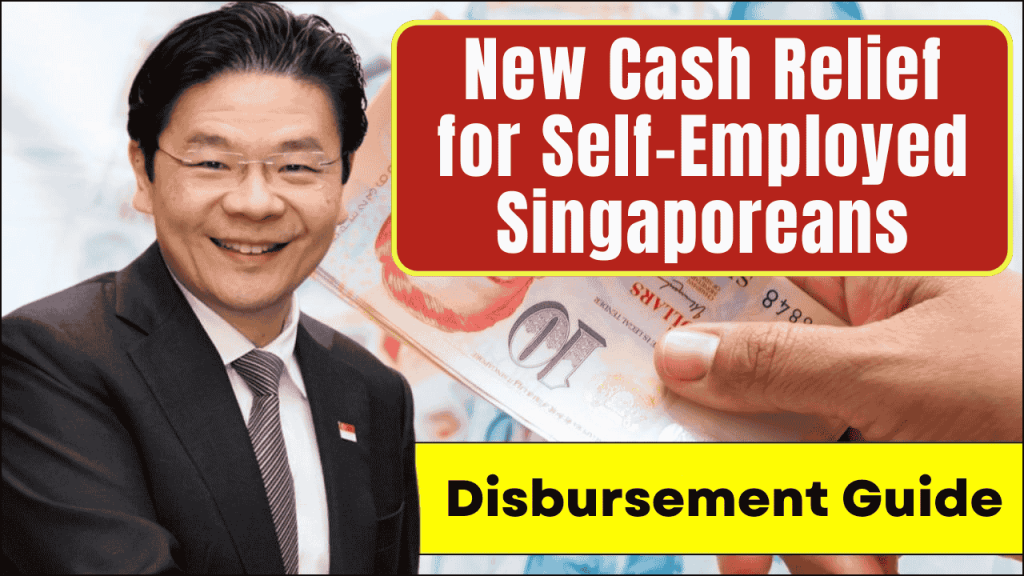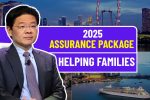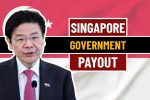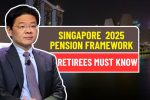
The Singapore government has confirmed a new round of financial assistance for self-employed individuals, with payments ranging from $200 to $400 set to be disbursed in April 2025. This initiative comes as part of ongoing efforts to support workers without traditional fixed salaries who often lack conventional employment safety nets. The relief measure aims to address rising cost of living pressures faced by freelancers, gig workers, private tutors, delivery riders, and other independent earners across the island nation.
(Also Read = Monthly Financial Support of S$840 – S$900 in Singapore)
Understanding the Self-Employed Person Income Relief Scheme (SIRS)
The Self-Employed Person Income Relief Scheme has been a vital component of Singapore’s social support structure for those operating outside traditional employment frameworks. Unlike conventionally employed workers who benefit from employer-provided benefits and CPF contributions, self-employed persons (SEPs) often navigate economic uncertainties without structural safety nets.
The 2025 extension of this scheme demonstrates the government’s continued recognition of the unique challenges faced by freelance workers. By providing direct financial support, authorities acknowledge the essential role SEPs play in Singapore’s diverse economy while addressing their vulnerability during economic fluctuations.
(Also Read = Singapore’s 2025 Assurance Package)
Key Features of the April 2025 Payout
Payment Timeline and Process
The financial relief will be distributed beginning in the first week of April 2025. Most qualified recipients can expect funds to appear in their bank accounts by mid-week. The process has been streamlined to operate automatically, utilizing existing records maintained by relevant government agencies to determine eligibility and facilitate transfers without requiring new applications from previously approved beneficiaries.
Tiered Support Based on Need
The payment amount—ranging from $200 to $400—will be determined through a tiered system that considers several factors:
- Previous income declarations and earnings history
- Prior government assistance received
- Updated personal financial information
- Household income considerations
- Property ownership status
This graduated approach ensures that financial assistance is proportionate to each individual’s circumstances, with those facing greater financial constraints receiving higher support amounts. While modest in scale, these payments provide timely assistance for covering essential expenses during periods of income instability.
Automated Distribution Mechanism
To facilitate efficient distribution, authorities will use bank details previously provided by recipients or gathered through existing government databases. This automation eliminates the need for paperwork and applications, allowing for rapid deployment of financial assistance to those who need it most.
Recipients are strongly encouraged to verify that their banking information and contact details are accurate and current with relevant government agencies. Outdated or incorrect information could delay payment receipt, potentially causing additional financial strain during an already challenging period.
Eligibility Criteria for Self-Employed Individuals
The financial support targets Singapore citizens who derive a significant portion of their income through self-employment activities. Eligibility assessment includes:
- Singapore citizenship status
- Verification of self-employment as a primary income source
- Household income evaluation to determine financial need
- Property ownership assessment
Importantly, individuals who have previously qualified and registered for earlier disbursements under the same scheme will not need to submit new applications. The system will automatically assess continuing eligibility based on existing records, streamlining the process for those already in the database.
Practical Impact for Singapore’s Freelance Community
For many self-employed Singaporeans, the $200 to $400 relief payment addresses specific challenges inherent to freelance work, including:
- Income volatility and unpredictable earning patterns
- Lack of employer-sponsored benefits
- Limited sick leave or vacation allowances
- Gaps between projects or contracts
- Rising operational costs that cannot always be passed to clients
The payment provides a temporary financial buffer that helps cover essential expenses such as groceries, utilities, transportation, and housing costs. While not intended as a long-term solution, this support acknowledges the financial precarity that often accompanies freelance careers, particularly during economic downturns or seasonal slowdowns.
Maximizing Benefit Through Preparedness
To ensure smooth receipt of this financial assistance, self-employed individuals should take several proactive steps:
- Verify personal information accuracy with relevant government agencies
- Ensure bank account details are current in official records
- Monitor official government communication channels for updates
- Check eligibility status through appropriate online portals
- Maintain accurate records of self-employment income and declarations
These preparatory actions help eliminate potential barriers to receiving timely support. Given the automatic nature of the disbursement, ensuring that the system has correct information is the most important step recipients can take.
Looking Beyond One-Time Payments
While the April 2025 payout provides welcome immediate relief, it also highlights the ongoing need for structural support systems designed for Singapore’s growing gig economy. As more citizens embrace flexible work arrangements, developing sustainable financial safety nets for self-employed workers remains an important policy consideration.
The current relief scheme represents one component of a broader approach to supporting entrepreneurship and independent work while acknowledging the economic challenges these career paths often entail. For recipients, the payment offers not just financial assistance but recognition of their contribution to Singapore’s diverse economic landscape.
Self-employed Singaporeans facing continued financial challenges beyond this one-time payment are encouraged to explore additional support programs available through various government agencies. These may include skills upgrading subsidies, business development grants, and other assistance schemes designed to enhance long-term economic resilience.
As Singapore continues navigating economic transformation, supporting its self-employed workforce remains essential to maintaining inclusive growth and ensuring that all segments of society can participate in and benefit from the nation’s prosperity.



